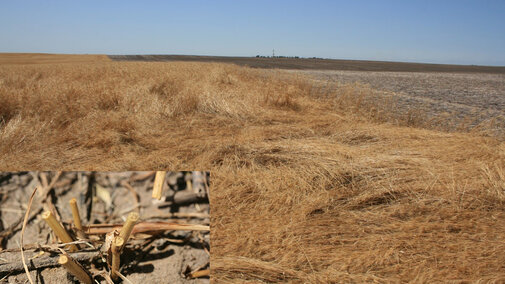Wheat stem sawfly has been a significant pest of wheat in the northern wheat-producing regions of our country such as Montana and North Dakota and well into Canada. Larvae cut and weaken the stems of maturing wheat, causing the wheat to lodge and leading to significant harvest losses in many situations.
In Nebraska wheat stem sawfly damage in winter wheat was first noted in the early to mid-1990s. The first infestations were noted in Banner County near the Wyoming border. It has continued to increase ever since and now is becoming a significant issue. Integrated pest management with multiple tactics will be needed to attack the problem. Crop rotation, resistant varieties with solid stem characteristics, and tillage can be used to help combat this problem.

Dryland wheat is most seriously affected, but some level of infestation also occurs in irrigated wheat. Dryland wheat adjacent to undisturbed stubble from last year appears to have the worst infestations. On some fields 50% to 70% of the stems are cut for the first 50 to 200 feet of the field edge (Figure 1). Cutting tapers off further into the field, but may be as high as 15%-30% across an entire field.
Sawfly larvae overwinter in the stubble (Figure 2) of the previous year’s crop and emerge in May and June to attack the developing crop during stem elongation. Females (Figure 3) emerge from the stubble, mate, and lay an egg in the newly elongating wheat stem. The egg hatches and the larvae feeds and tunnels through the nodes of the developing wheat, finally girdling and weakening the stem and causing lodging. The larvae live in a pupal chamber inside the stub at the very base of the stem (Figures 4 and 5) after harvest and through the winter and then exit the following spring.
New Management Research
This year we saw high populations of wheat stem sawfly in some areas of the Panhandle and in northeastern Colorado. The Entomology Lab at the Panhandle Research and Extension Center in Scottsbluff has looked into spring tillage in fallow as one option for sawfly control. Data analysis is not final; however, data from 2017 indicates a three-fold reduction in wheat stem sawfly emergence from fallow ground that has been disturbed by a single pass with a tandem disk in April.

